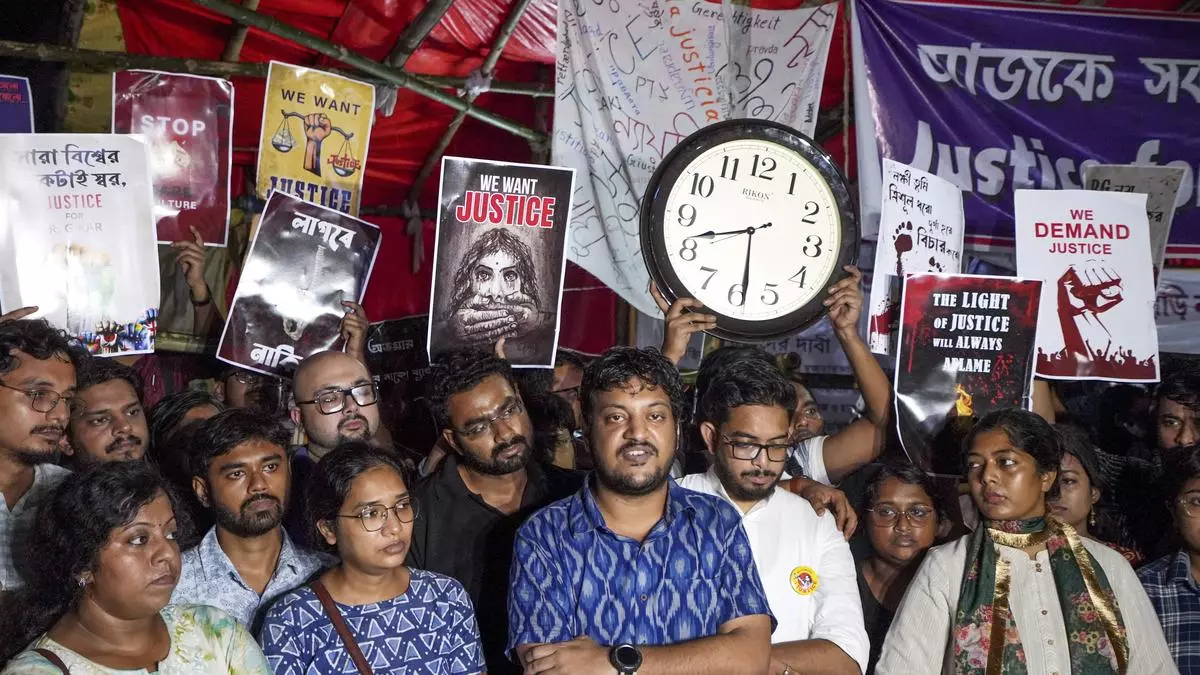 |
|
The horrific rape and murder of a young female doctor at Kolkata’s RG Kar medical college sparked a remarkable citizen uprising in Bengal. While the brutality of the crime was not unprecedented, the response it elicited from the younger generation was. The protests that followed, fueled by outrage and a yearning for change, revealed a new wave of civic engagement, offering valuable lessons for India's democracy.
Firstly, the uprising demonstrated the power of citizens uniting without political affiliation. Junior doctors, under the banner of the WBJDF, vehemently opposed the entry of any political parties, highlighting the potential for sustained social movements without a political umbrella. This rejection reflected both disillusionment with political parties and a desire to protect the cause from manipulation.
Secondly, the protests highlighted the crucial role professional bodies can play in advocating for better working conditions. The junior doctors' movement challenged the traditional perception of unionism, showcasing the possibility of raising professional concerns under a banner of collective action without the stigma of being ‘unprofessional’. This resonated with a broader societal shift towards recognizing the right of professionals, including doctors, teachers, and soldiers, to demand their rights while remaining accountable for their work.
Thirdly, the protests showcased a powerful coalition of men and women united against gender violence. The men’s anger at the perpetrators and the broader culture of toxic masculinity signaled a growing movement to dismantle harmful gender norms. The awareness that patriarchy and toxic masculinity not only disadvantage women but also harm men, discouraging them from expressing vulnerability and empathy, fueled this movement.
The protests also revealed a new dynamic in the role of art and artists. While every movement needs an anthem, the public was discerning in its support, readily embracing artists who authentically supported the cause and swiftly rejecting those perceived as opportunists. The demand for accountability from artists underscores the blurring of lines between art and activism, signifying a shift towards expecting artists to use their platforms responsibly.
Furthermore, the protests saw a rare instance of the Indian middle class stepping out of its comfort zone to support the young generation. The middle class, often hesitant to engage in public demonstrations, stood united in solidarity with the young doctors, recognizing the need for change in a system that threatens the meritocracy they value. This shift reflected a growing awareness of the interconnectedness of social justice issues and their impact on individual lives.
Finally, the protests highlighted the anger and determination of India's Gen Z. Tired of inherited inequalities, social intolerance, and environmental degradation, they are challenging the existing system, demanding a society that lives up to the ideals of meritocracy while addressing deep-rooted corruption. Despite their frustration, they demonstrate the ability to remain non-violent, focused, and organized, echoing Gandhian principles while rejecting labels.
While the ultimate outcome of the RG Kar case and its impact on the broader system remains uncertain, the protests have undoubtedly left an indelible mark on India's democracy. The movement, driven by a young generation fueled by anger and empathy, has ushered in a new era of civic engagement, offering a glimmer of hope for a more just and equitable society.
Source: RG Kar: A citizens’ awakening
